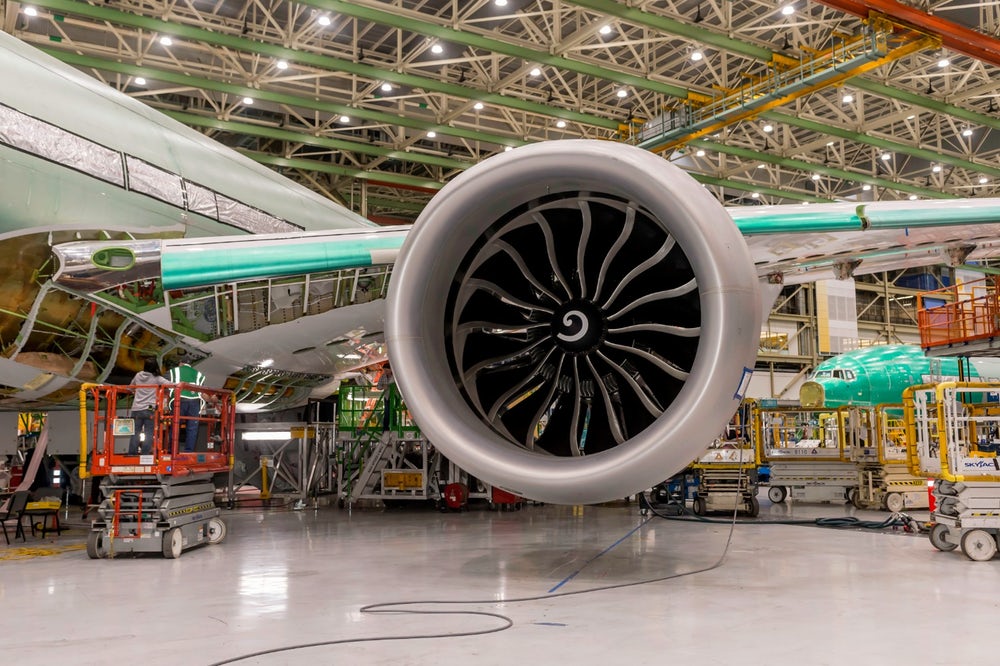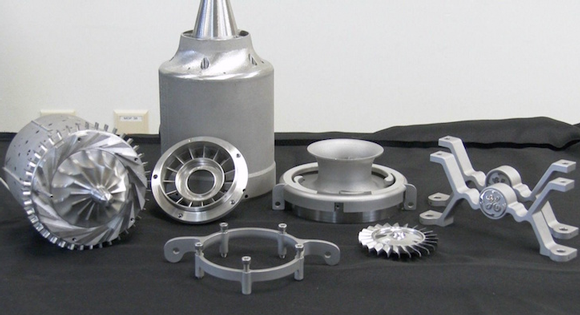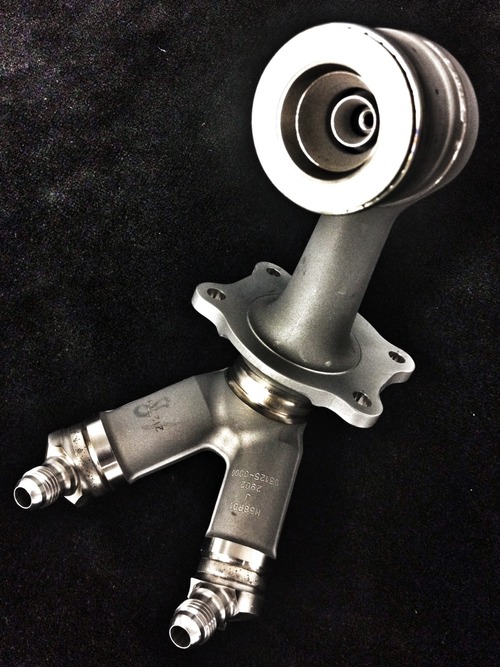GE Aerospace, the aerospace and aviation division of US energy multinational General Electric (GE), has announced plans to invest over $650 million into its global manufacturing plants and supply chain this year.
The Ohio-based engine manufacturer hopes that this investment will increase its production capacity, allowing it to meet growing demand from commercial and defense clients.
In particular, the 2024 investment plan will enable GE Aerospace to scale production of its 3D printing-enabled LEAP engines. Developed by CFM International, GE’s joint venture with French aerospace manufacturer Safran, these engines power the Airbus A320neo, Boeing 737 MAX, and COMAC C919 aircraft.
The finances will also be leveraged to enable full-scale production of the company’s GE9X engines, which feature over 300 3D printed parts. This engine has been designed specifically for Boeing 777X jets.
“We are making significant investments in the future of flight and in the dozens of communities and supplier partners helping us build it,” stated H. Lawrence Culp, Jr., CEO of GE Aerospace. “These investments are part of the next chapter for GE Aerospace, supporting cutting-edge equipment and safety enhancements that will help us meet our customers’ growing needs.”
This news follows the announcement that GE Aerospace will become a fully independent company next month. General Electric has scheduled the spinoff of its GE Vernova power generation business for April 2, 2024, leaving GE Aerospace as the company’s sole remaining operation.
Following this, General Electric will take the GE Aerospace name, completing GE’s transformation into three independent organizations. Its medical division, GE Healthcare, became an independent company in January 2023.

GE Aerospace to scale production capacity
As part of its 2024 investment plan, GE Aerospace will invest nearly $450 million into 22 of its facilities across 14 US states, with an additional $100 million going to some of its international sites. A further $100 million will be invested in its US-based suppliers, helping to secure the company’s domestic supply chain.
As part of the US investment, $107 million is earmarked for the company’s Cincinnati-based facilities to scale the production of commercial and military aircraft engines. In particular, the funds will be used to acquire new 3D printers, tooling and other equipment, and to upgrade engine testing facilities.
GE Aerospace’s 3D printing capabilities will also be expanded at its Auburn, Alabama facility, which will receive $54 million. It is hoped that these upgrades will accelerate the production of engine components.
Elsewhere, $46 million will be spent in North Carolina to expand production capacity and quality improvements.
$5 million will also be injected into GE Aerospace’s Terre Haute facility in Indiana. Here, upgrades to hardware and the building itself will be made to enhance the production of narrowbody and widebody aircraft engines.
GE Aerospace is also set to spend $30 million to support the assembly and testing of engines for military helicopters and fighter jets in Lynn, Massachusetts.
This follows a similar investment last year, which saw GE Aerospace inject $335 million to improve assembly, boost capacity, and enhance safety infrastructure at its facilities throughout the US.
GE Aerospace will hire over 1,000 new employees at its US-based factories, further boosting production capacity.

3D printing at GE Aerospace
GE Aerospace is a long-time adopter of additive manufacturing. According to European Patent Office (EPO) data, GE submitted the most 3D printing-related patents of any company between 2001 and 2020.
Each of GE Aerospace’s LEAP engines include 19 3D printed fuel nozzles that reportedly increase fuel efficiency by 15%, compared to CFM56 engines.
The key to achieving this efficiency is reducing weight. GE’s landmark 3D printed fuel nozzle tips are 25% lighter and five times more durable than their conventionally manufactured counterparts.
The LEAP nozzles also feature a complex geometry that pre-mixes the jet fuel before it is fed into the combustion chamber, further increasing engine efficiency. In service since 2016, hundreds of thousands of the nozzles have been produced, a significant milestone for high-volume 3D printing within aerospace.
GE Aerospace has been developing and testing its GE9X engines since 2013. Boasting 134,300 pounds of thrust, much of the jet engine is 3D printed. Here, additive manufacturing has been heavily leveraged to fabricate parts with geometries impossible to achieve with conventional manufacturing methods.
In 2019, it was announced that each GE9X engine features 300 3D printed, which combine to form seven multi-part components. These components include GE’s 3D printed fuel nozzle, as well as temperature sensors, fuel mixers, heat exchangers, separators, and foot-long low-pressure turbine blades, which help to reduce the engine’s weight.
According to GE, 3D printing has enabled the GE9X engine to be 10% more fuel efficient than the GE90.

Additive manufacturing boosts aerospace sector
GE Aerospace is not the only company working to scale the production of aerospace components with additive manufacturing.
Industrial metal 3D printer manufacturer AddUp and French aerospace company Dassault Aviation have partnered to push metal 3D printing from “prototyping” to “mass production” for aeronautics.
Announced in 2022, the five-year project aims to develop, qualify, and incorporate a multi-material metal 3D printing process optimized for the production of aircraft components certified in classes 2 and 3. The project, dubbed AEROPRINT, seeks to achieve stability in terms of quality, reproducibility, and competitiveness with metal 3D printing.
Elsewhere, Aerospace and defense contractor Lockheed Martin, metal 3D printer manufacturer Velo3D and aerospace part inspection company Vibrant collaborated with the US Department of Defense’s (DoD) LIFT Institute.
Through this collaboration, the partners assessed the validity of 3D printing hypersonic ramjet engines. Unlike their turbojet counterparts, ramjets possess very few moving parts and can achieve hypersonic (above Mach 5) flight speeds. The ultimate goal of this project was to determine which materials and manufacturing processes offer the most efficient pathways for achieving hypersonic flight.
3D printed using Velo3D’s laser powder bed fusion (LPBF) technology, the ramjet components were subjected to Vibrant’s acoustics-based Process-Compensated Resonance Testing (PCRT). Here key physical properties, such as stress state, part integrity, geometry, and surface finish, were assessed. The next stage of the research will consider the fatigue behavior of the 3D printed parts, considering a move toward “born-certified” parts.
What does the future of 3D printing hold?
What near-term 3D printing trends have been highlighted by industry experts?
Subscribe to the 3D Printing Industry newsletter to keep up to date with the latest 3D printing news. You can also follow us on Twitter, like our Facebook page, and subscribe to the 3D Printing Industry Youtube channel to access more exclusive content.
Are you interested in working in the additive manufacturing industry? Visit 3D Printing Jobs to view a selection of available roles and kickstart your career.
Featured image shows the Boeing 777X jet and GE9X engine. Photo via Boeing.


